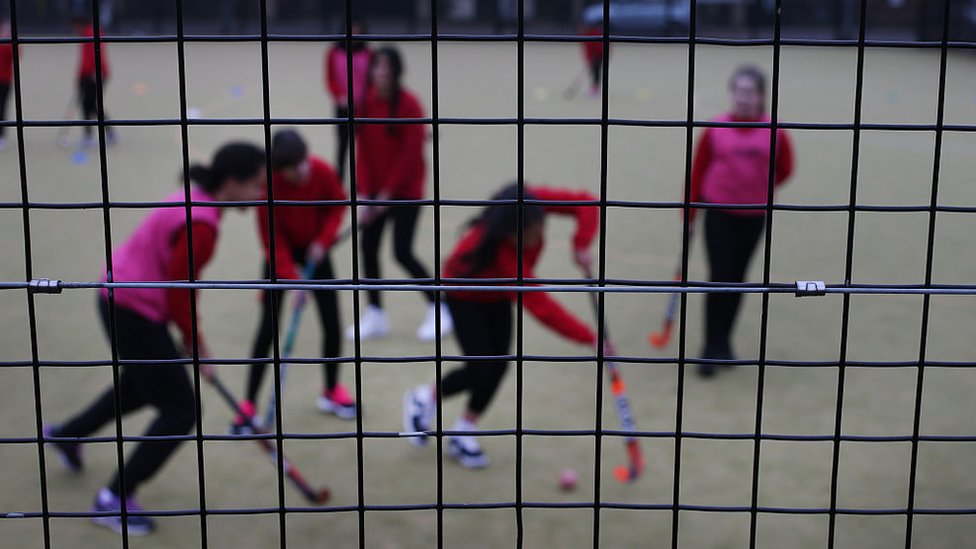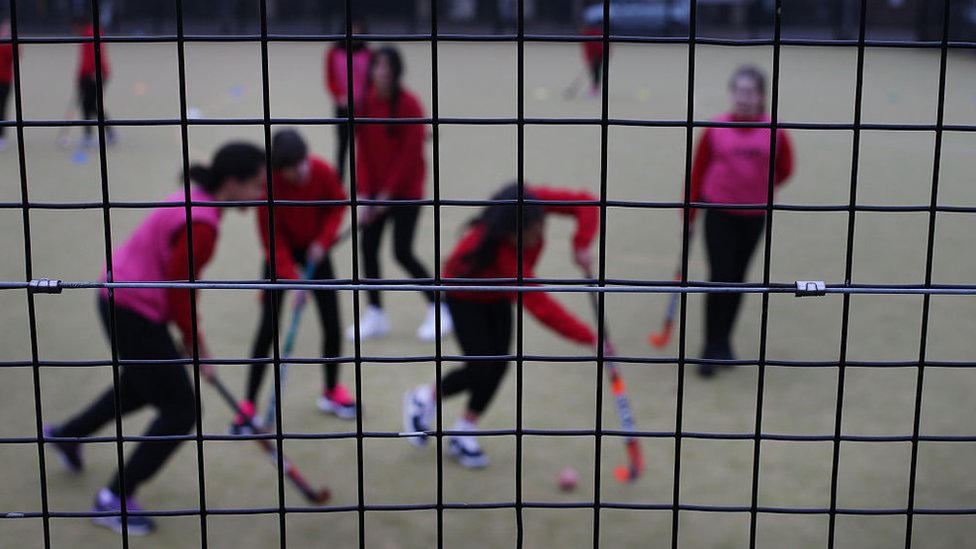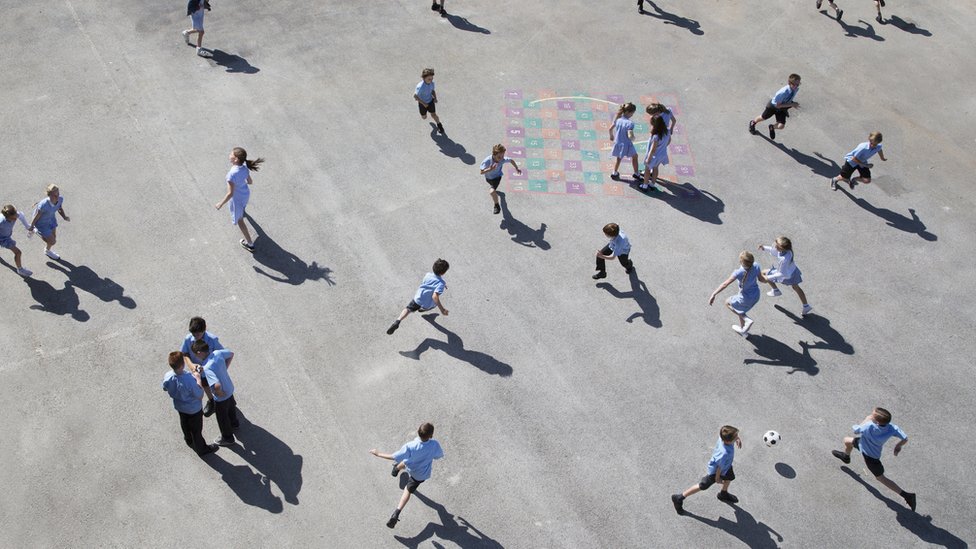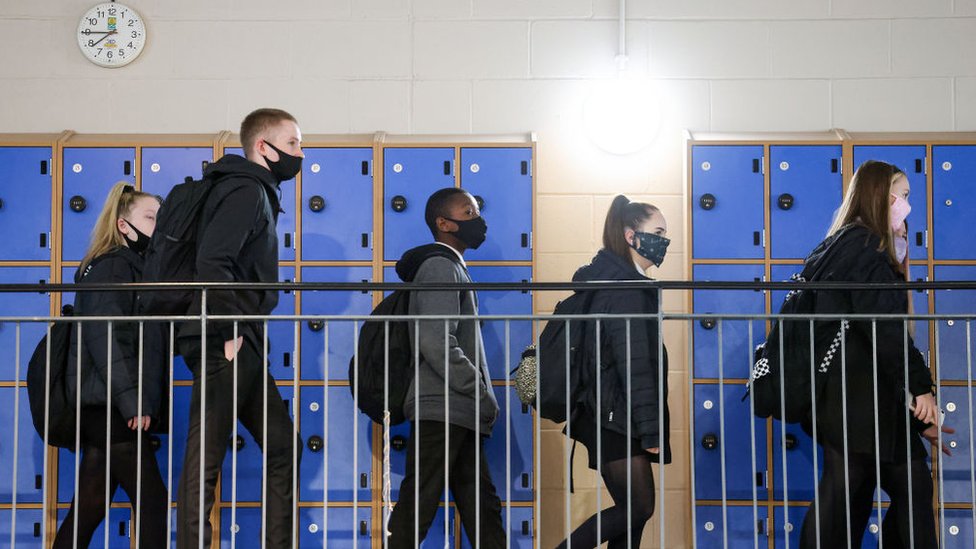Coronavirus, schools and children – what are the risks?
How much do children contribute to the spread of Covid? …

.css-94m6rd-HeadingWrapper{border-bottom:solid 1px #BABABA;padding-bottom:1.5rem;}.css-94m6rd-HeadingWrapper > *:not([hidden]):not(style) ~ *:not([hidden]):not(style){margin-top:1rem;}
- .css-8d0yke-MetadataStripItem{display:inline-block;white-space:nowrap;margin-top:0.25rem;max-width:calc(100% – 1em);}.css-8d0yke-MetadataStripItem::after{content:”;display:inline-block;height:1.25em;border-left:#BABABA 1px solid;margin:0 0.5em;vertical-align:-0.25em;}.css-8d0yke-MetadataStripItem:last-child{max-width:100%;}.css-8d0yke-MetadataStripItem:last-child::after{content:none;}
.css-1kpdaxb-TagShareWrapper{display:-webkit-box;display:-webkit-flex;display:-ms-flexbox;display:flex;}.css-1kpdaxb-TagShareWrapper > *:not([hidden]):not(style) ~ *:not([hidden]):not(style){margin-left:0.5rem;}
.css-vk3nhx-ComponentWrapper{margin:1.5rem 0;}
 .css-1ecljvk-StyledFigureCopyright{position:absolute;bottom:0;right:0;background:#3F3F42;color:#EEEEEE;padding:0.25rem 0.5rem;text-transform:uppercase;}image copyrightGetty Images
.css-1ecljvk-StyledFigureCopyright{position:absolute;bottom:0;right:0;background:#3F3F42;color:#EEEEEE;padding:0.25rem 0.5rem;text-transform:uppercase;}image copyrightGetty Images.css-uf6wea-RichTextComponentWrapper{margin:1rem 0;max-width:36.25rem;}
.css-14iz86j-BoldText{font-weight:bold;}Most children across the UK are starting the new term learning from home as schools close to the large majority of pupils in England, Scotland, Wales and Northern Ireland for the coming weeks.
So what is known about how the virus is transmitted among children and in schools – and will closing them make a difference?
.css-mysbf6-ComponentWrapper-CrossheadComponentWrapper{margin:1.5rem 0;max-width:50rem;padding-top:1rem;max-width:36.25rem;}
.css-qozapo-StyledHeading{font-family:ReithSerif,Helvetica,Arial,freesans,sans-serif;font-weight:500;font-size:1.5rem;line-height:1.75rem;color:#3F3F42;}@media (min-width:37.5rem){.css-qozapo-StyledHeading{font-size:2rem;line-height:2.25rem;}}.css-qozapo-StyledHeading:focus{outline-style:none;}.css-qozapo-StyledHeading:focus-visible{outline-style:auto;}
What’s the risk to children and young people?
Children’s risk of becoming seriously ill from the virus is tiny – and this hasn’t changed since the start of the pandemic, even with a new, more contagious variant of coronavirus circulating in the UK.
Despite a clear rise in the numbers of children infected in the second wave, child health experts confirm they are not seeing a substantial rise in Covid-related illnesses in children in hospital.
“As cases in the community rise there will be a small increase in the number of children we see with Covid-19, but the overwhelming majority of children and young people have no symptoms or very mild illness only,” says Prof Russell Viner, president of Royal College of Paediatrics and Child Health.
And Dr Mike Tildesley, an infectious disease modeller, tells the BBC that “we are not getting a significant increase in cases in a primary school setting despite this new variant”.
One in three people are thought to have no symptoms when infected with the virus. And children appear to have asymptomatic infections at least as often as adults
Do children spread the virus?
Among pupils in primary schools, up to the age of 11, evidence shows that there is limited spread of coronavirus.
Children of this age don’t appear to be the main drivers for passing it on to their friends or to their families at home.
Children of secondary school age are different, however – they appear to be more able to pass the virus on.
But there is no evidence that teenagers are more likely to transmit than adults.
.css-yidnqd-InlineLink:link{color:#3F3F42;}.css-yidnqd-InlineLink:visited{color:#696969;}.css-yidnqd-InlineLink:link,.css-yidnqd-InlineLink:visited{font-weight:bolder;border-bottom:1px solid #BABABA;-webkit-text-decoration:none;text-decoration:none;}.css-yidnqd-InlineLink:link:hover,.css-yidnqd-InlineLink:visited:hover,.css-yidnqd-InlineLink:link:focus,.css-yidnqd-InlineLink:visited:focus{border-bottom-color:currentcolor;border-bottom-width:2px;color:#B80000;}@supports (text-underline-offset:0.25em){.css-yidnqd-InlineLink:link,.css-yidnqd-InlineLink:visited{border-bottom:none;-webkit-text-decoration:underline #BABABA;text-decoration:underline #BABABA;-webkit-text-decoration-thickness:1px;text-decoration-thickness:1px;-webkit-text-decoration-skip-ink:none;text-decoration-skip-ink:none;text-underline-offset:0.25em;}.css-yidnqd-InlineLink:link:hover,.css-yidnqd-InlineLink:visited:hover,.css-yidnqd-InlineLink:link:focus,.css-yidnqd-InlineLink:visited:focus{-webkit-text-decoration-color:currentcolor;text-decoration-color:currentcolor;-webkit-text-decoration-thickness:2px;text-decoration-thickness:2px;color:#B80000;}}Schoolchildren and young adults have undoubtedly experienced a much faster rise in infections than other age groups in the second wave – and that may be down to their opportunities to mingle.
During England’s lockdown in November, for example, schools remained open and operated normally while many other areas of society were closed to anywhere near normal levels of mixing.
.css-18mjolk-ComponentWrapper{margin:1.5rem 0;max-width:50rem;}
 image copyrightGetty Images
image copyrightGetty ImagesWhat role do schools play?
This is difficult to unpick. When schools are open, there is more spread among school children, particularly those of secondary school age. There have been signs that transmission dips after school holidays, such as half term.
But are levels of infection in schools simply reflecting levels of the virus in their local communities?
Early data from an ONS survey of 100 schools in England which tested random pupils and staff without symptoms suggests this is the case. It found 1.24% of pupils and 1.29% of staff tested positive for the infection in November, mirroring an estimated 1.2% infection rate in the general population.
Sage, the government’s scientific advisory group, also recognises the challenge of judging the role of transmission in schools.
“It is difficult to quantify the size of this effect and it remains difficult to quantify the level of transmission taking place specifically within schools compared to other settings,” they say in their latest paper from December.
Will closing schools have an effect?
Since the first national lockdown in the spring, keeping schools open has been a priority for government ministers because of the importance of education.
The advisory group Sage has always said that closing schools was likely to have an impact on the ‘R’ or reproduction number of the virus, bringing it down slightly.
In the Sage minutes from 22 December, the scientific advisers say the “closure of secondary schools [is] likely to have a greater effect than closure of primary schools”.
And Education Secretary, Gavin Williamson, has said there is early evidence from Sage that the closure of primary schools is likely to have a greater effect than the closure of nurseries.
But the longer-term question is how long they could reasonably be closed for and what would happen when they opened again.
Dr Shamez Ladhani, the chief investigator of the ONS schools survey and a consultant at Public Health England, says driving down infections in wider society is the best way to keep schools open and safe, adding that closing them would only have a temporary effect on cases.
But Sage also says policymakers need to weigh up the benefits and harms of closing schools, including reducing the direct health risks to staff and the negative impact on children’s mental health, education, development and wellbeing.
Many experts agree this is a difficult balancing act and argue that schools should be last things in society to close and the first things to open up again.
 image copyrightGetty Images
image copyrightGetty ImagesWhat do we know about household transmission?
Experts, including Prof Sir Mark Walport, a member of Sage, have said that teenagers are seven times more likely than others in a household to bring the infection into a household.
This figure comes from a University of Manchester analysis of household transmission risk, which also found that under-16s are much more likely to be the first case in their household than over-17s.
The analysis showed that 2-16 year olds are more than twice as likely to pass on the virus within their household compared to people aged 17 and over.
These may have been the statistics that forced the closure of school gates, with the prime minister saying on Monday evening that schools “may act as vectors for transmission between households”.
What about the new variant?
The latest data indicates that the variant is spreading quickly across all age groups, including children, and is “hugely” more transmissible than previous versions.
Scientists are looking into this urgently.
What’s the risk to teachers?
Research by the Office for National Statistics suggests teaching staff have been at no greater risk of infection than other professions working outside the home during the pandemic.
But this data only goes up to October and doesn’t cover the new variant which could have an impact on transmission in schools, and elsewhere.


.css-144ki52-SectionWrapper{margin:1.5rem 0;padding-top:1.5rem;}
.css-1nrzmoz-StyledHeading{font-family:ReithSerif,Helvetica,Arial,freesans,sans-serif;font-weight:500;font-size:1.125rem;line-height:1.375rem;color:#3F3F42;}@media (min-width:37.5rem){.css-1nrzmoz-StyledHeading{font-size:1.25rem;line-height:1.5rem;}}.css-1nrzmoz-StyledHeading:focus{outline-style:none;}.css-1nrzmoz-StyledHeading:focus-visible{outline-style:auto;}
Related Topics
- .css-1as76fj-PromoItem{margin:1.5rem 0;}
- .css-1c71b3r-Promo{font-family:ReithSans,Helvetica,Arial,freesans,sans-serif;font-weight:400;font-size:0.875rem;line-height:1.125rem;position:relative;height:100%;outline:solid transparent;color:#696969;}.css-1c71b3r-Promo a:not(.e1f5wbog6){z-index:2;position:relative;}

